Roman innovations in urban planning have profoundly shaped the way cities are designed and function, both in ancient times and in the present day. The meticulous planning and strategic infrastructure implemented by the Romans revolutionized urban living, leaving a lasting legacy that continues to influence modern urban landscapes.
This article delves into the key aspects of Roman urban planning that have forever altered the course of city life, highlighting the significance of their contributions and exploring how these innovations have stood the test of time.
The Foundation of Roman City Design: Grid Street Patterns
In Roman urban planning, the grid layout system played a crucial role in shaping cities for centuries to come:
1.1. Explanation of the Grid Layout System
Roman cities were meticulously laid out in a grid pattern, with streets intersecting at right angles. This design promoted efficient movement and easy navigation for residents and visitors alike.
1.2. Improved Movement and Organization
The grid street patterns not only facilitated smooth circulation but also enhanced the organization of urban spaces. Districts were clearly demarcated, allowing for better management and administration within the city.
1.3. Examples of Cities with Grid Layouts
One notable example showcasing Roman grid planning is Pompeii. The city’s streets formed a well-organized grid, contributing to the overall functionality and aesthetic appeal of the urban landscape.
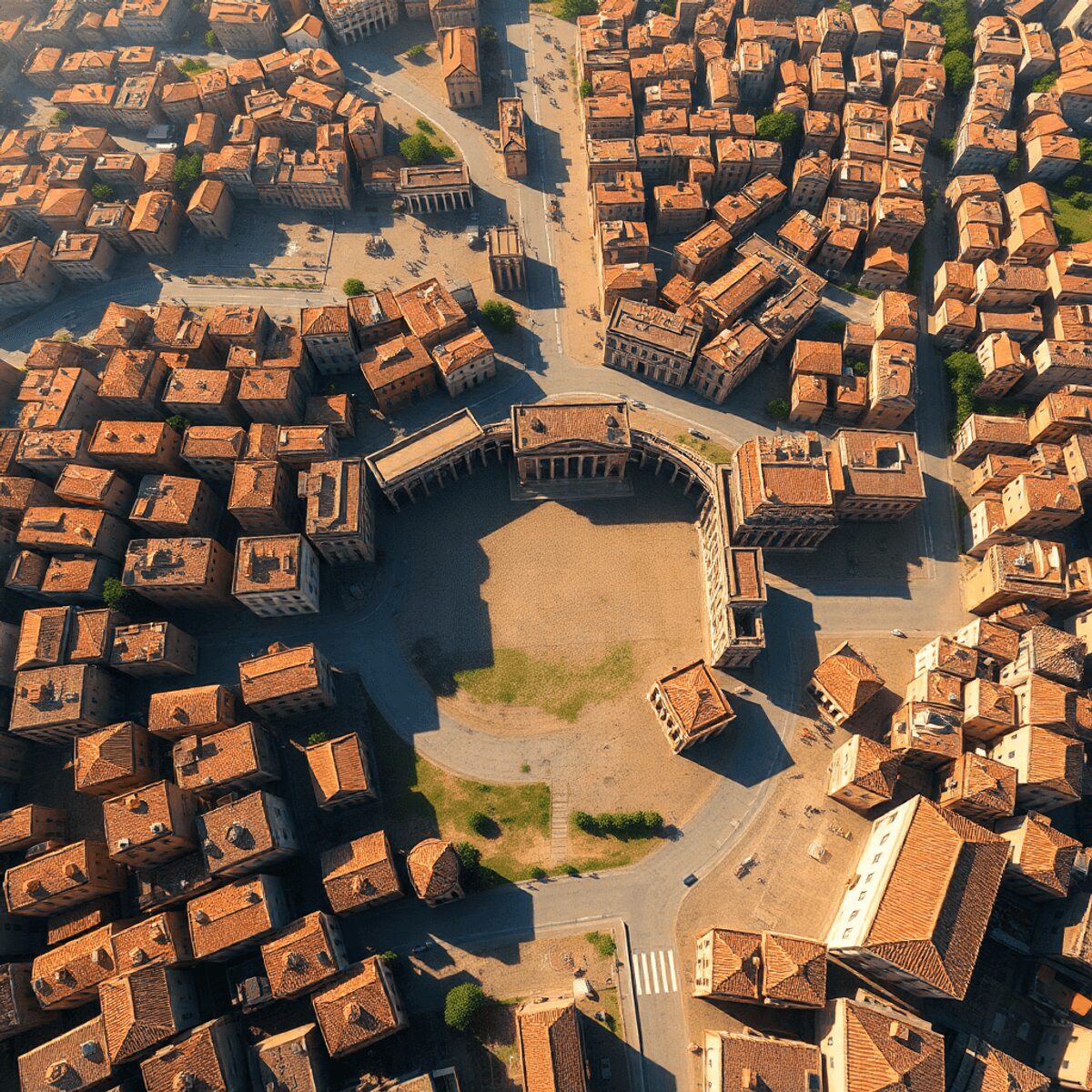
Centralized Forums: The Heart of Civic Life
Role of forums as centers for social, political, and economic activities
The Roman forum was the heartbeat of civic life, serving as a multifunctional space for various activities. It was a venue for public speeches, elections, commercial transactions, and social gatherings. Citizens gathered to discuss politics, engage in trade, and interact with one another, fostering a sense of community and civic engagement.
Design and placement within the city
Located at the center of Roman cities, forums were strategically positioned to be easily accessible from all parts of the urban area. Surrounded by important governmental buildings, temples, and markets, the forum was designed as the focal point of the city’s public life.
Impact on community interaction and governance
Forums played a crucial role in shaping societal norms and fostering community cohesion. They provided a platform for citizens to voice concerns, participate in decision-making processes, and engage in cultural and religious events. The centralized nature of forums facilitated effective governance and communication among residents.
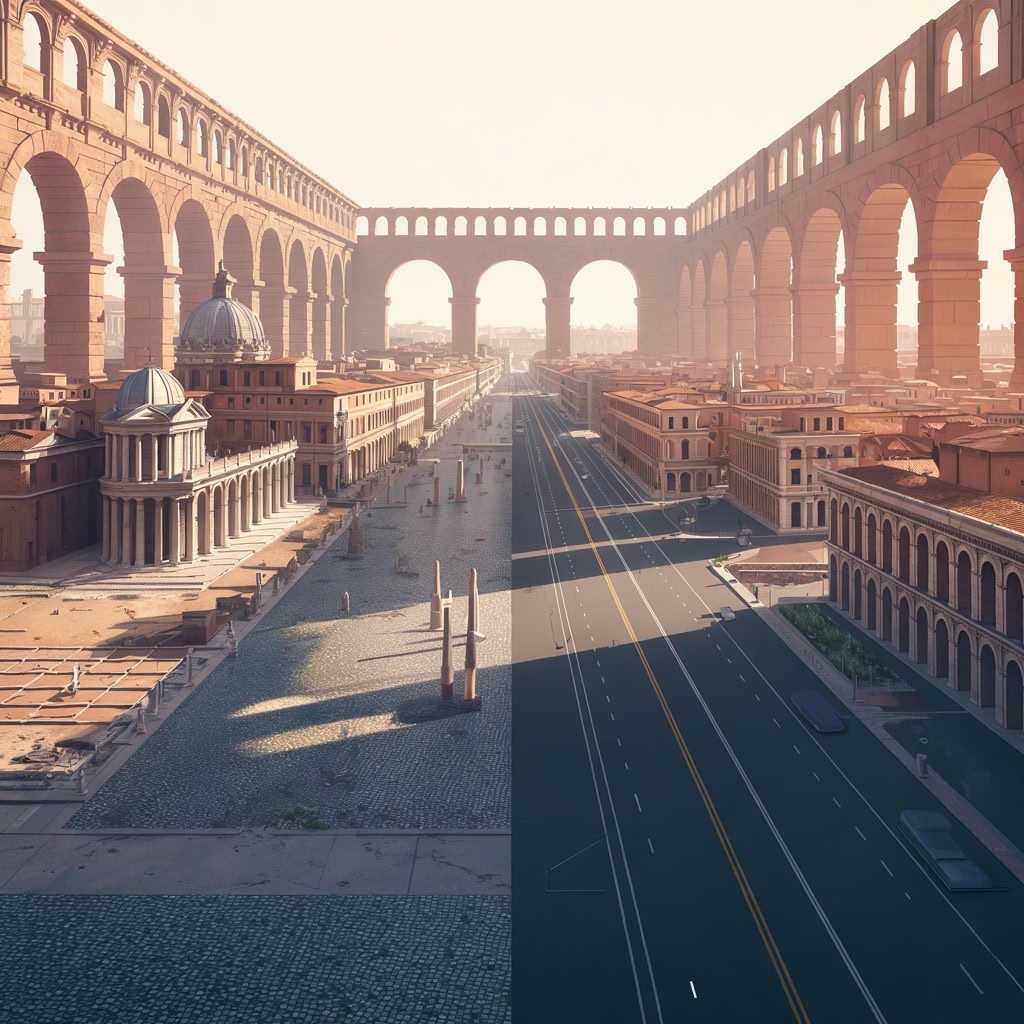
Revolutionary Infrastructure: Roads and Connectivity
Roman roads are considered a remarkable achievement in infrastructure engineering during ancient times, setting standards that still have an impact on modern transportation systems. These roads were built using a multi-layered construction method designed to ensure long-lasting durability:
- Statumen: Large stones forming a solid foundation
- Rudus: A layer of smaller stones mixed with lime
- Nucleus: Fine concrete or gravel creating a smooth base
- Summum dorsum: Paved surface of tightly fitted stones
This innovative approach allowed the roads to endure heavy traffic and withstand harsh weather conditions, with some sections even surviving to this day.
Connecting Cities and Regions
The extensive network of Roman roads served as crucial pathways linking cities and regions throughout the empire. This connectivity had far-reaching effects:
- Efficient movement of armies: The ability to swiftly deploy military forces was vital for maintaining control over vast territories.
- Thriving trade: Goods could easily be transported along these routes, promoting economic growth and prosperity.
- Improved mobility for citizens: People had greater access to markets, forums, and public amenities, enhancing their quality of life.
Transforming Urban Life
One of the key Roman innovations in urban planning that transformed city life forever was this groundbreaking concept of durable roadways. These well-constructed roads became the backbone of urban connectivity and played a significant role in fostering imperial unity.
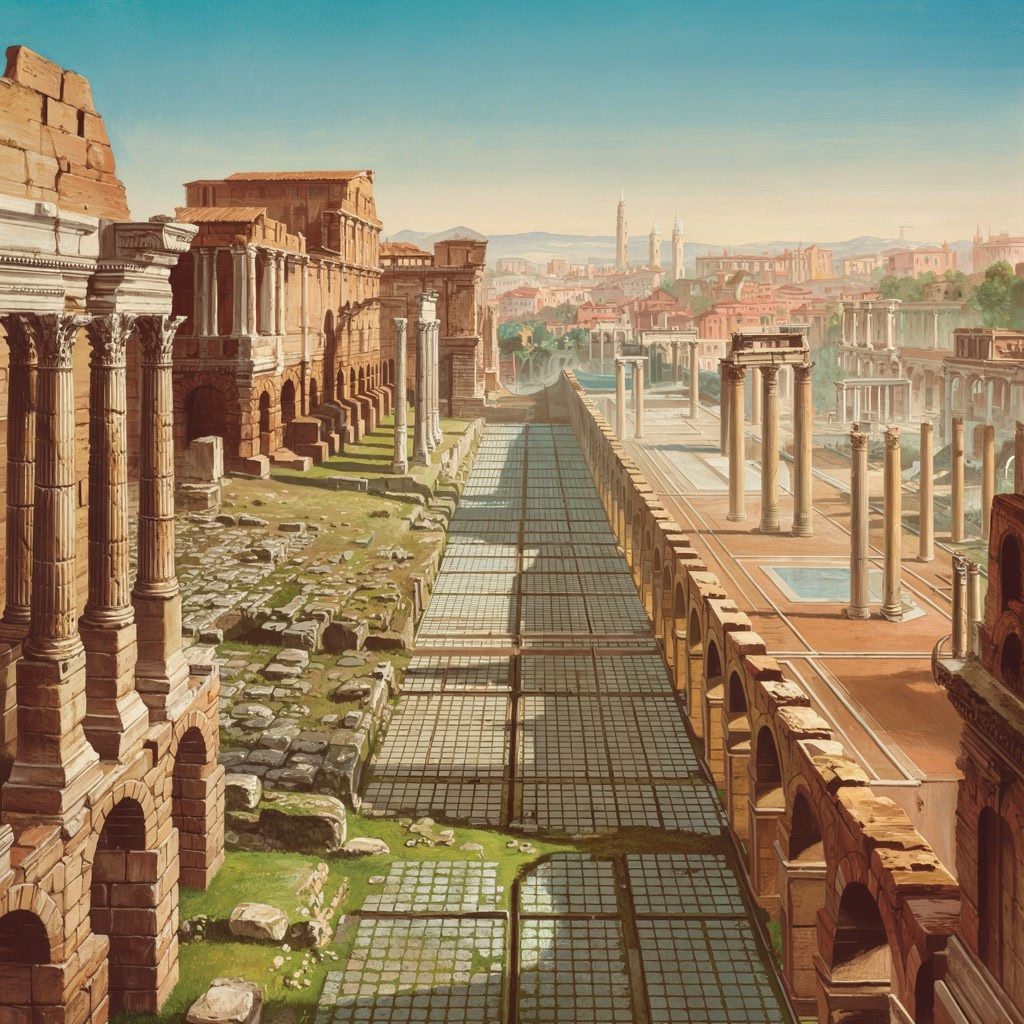
Water Supply Innovations: Aqueducts and Urban Health
The Roman Empire was known for its advanced engineering skills, which enabled them to create complex water supply systems such as aqueducts. These structures played a crucial role in maintaining public health and improving the quality of life in urban areas.
Design and Engineering Principles of Aqueducts
Aqueducts were designed using a combination of arches and gravity-fed channels. The use of arches allowed for the construction of long spans without the need for supporting columns, making it possible to transport water over valleys and uneven terrain. Gravity-fed channels ensured that water flowed smoothly from its source to the destination, eliminating the need for mechanical pumps.
Significance for Sustaining Large Urban Populations
As cities grew in size and population, the demand for clean water increased significantly. Aqueducts provided a reliable source of water supply, enabling cities to sustain large populations. This was particularly important for Rome, which had a population of over one million people at its peak.
Contribution to Improved Hygiene and Daily Life
Access to clean water had a direct impact on public health. With aqueducts supplying fresh water to homes, baths, and public fountains, sanitation practices improved significantly. People could bathe regularly, dispose of waste properly, and maintain cleanliness in their surroundings.
The implementation of aqueducts not only addressed immediate water supply needs but also laid the foundation for sustainable urban living. By prioritizing public health through innovative engineering solutions, the Romans set an example for future civilizations in managing their water resources effectively.
Sanitation Systems: Enhancing Hygiene and Comfort
Overview of Sewage Networks and Communal Toilets
In Roman cities, sophisticated sewage systems were developed to manage waste efficiently. Sewers and drainage channels were intricately designed to remove waste from homes and streets, enhancing cleanliness and reducing health risks. Additionally, communal toilets were strategically located throughout the city to provide residents with access to sanitation facilities.
Role of Public Baths as Hygiene Centers and Social Spaces
Public baths played a crucial role in Roman society, serving as not only places for personal hygiene but also social gathering spots. These communal bathhouses offered various amenities like hot baths, steam rooms, and exercise areas, promoting cleanliness and well-being among the population while fostering social interactions.
Effects on Public Health Standards in Ancient Cities
The implementation of advanced sanitation systems and public baths significantly elevated public health standards in Roman cities. By ensuring proper waste disposal, promoting personal hygiene practices, and offering communal bathing facilities, Romans effectively minimized the spread of diseases and improved overall well-being within urban communities.
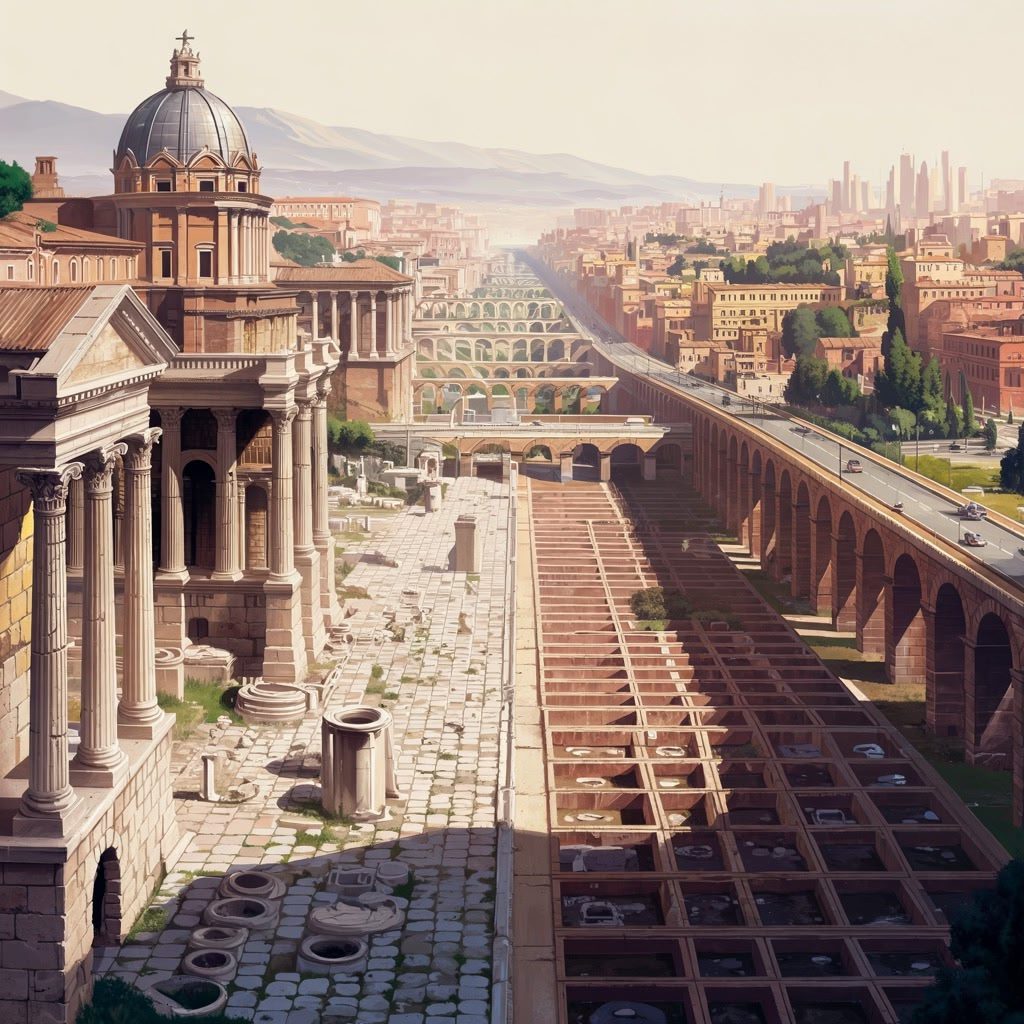
Advancements in Construction Materials and Techniques
Roman concrete was a crucial advancement that changed construction practices and architectural innovation. Here are the key points to consider:
- Development and Use of Concrete: Romans perfected the formula for concrete, consisting of volcanic ash, lime, and water. This durable material allowed for a significant shift in building techniques.
- Examples of Roman Architectural Marvels: Iconic structures like the Pantheon and Colosseum exemplify the strength and versatility of Roman concrete. These enduring monuments stand as testaments to Roman engineering prowess.
- Enabling Ambitious Architectural Projects: With the introduction of concrete, Romans could construct grand buildings with intricate designs and large-scale features previously unattainable. This innovation laid the foundation for future architectural endeavors.
The use of Roman concrete not only transformed the physical landscape but also influenced architectural principles that endure to this day.
Heating Innovations: The Hypocaust System
The hypocaust heating system was a major advancement in central heating in ancient Rome, providing effective warmth in villas, public baths, and other important structures. This system functioned by circulating hot air beneath elevated floors supported by columns, allowing heat to evenly spread throughout rooms. Walls often had empty spaces or flues to direct heated air upward, improving heat distribution.
Key benefits included:
- Keeping indoor temperatures comfortable during cold months, making Roman homes and bathhouses more livable throughout the year.
- Decreasing dependence on open fires inside rooms, which improved air quality and safety.
The engineering principles behind the hypocaust system influenced later heating technologies in Europe, paving the way for modern underfloor heating systems. Its design showcased Roman creativity not only in architecture but also in creating spaces centered around human comfort—a priority that still resonates in urban housing and public building design today.
Architectural Elements Shaping Urban Aesthetics
Roman architecture design is instantly recognizable for its pioneering use of arches and domes, elements that changed both structural engineering and urban aesthetics.
The Impact of Arches and Domes
- Arches provided exceptional strength, distributing weight evenly and allowing for larger, more open interior spaces without relying on thick walls or numerous columns.
- Domes enabled the creation of vast, uninterrupted ceilings, exemplified by masterpieces like the Pantheon. Their curved form not only enhanced durability but also created awe-inspiring interiors filled with natural light.
These features transformed cityscapes by introducing monumental buildings that combined functionality with grandeur. The visual impact was profound: imposing arches framed streets and entrances, while domes crowned temples, baths, and public halls, establishing a distinct silhouette against the skyline.
The Enduring Legacy of Roman Architecture
The legacy of Roman architectural elements endures in modern design. Contemporary architects continue to draw inspiration from these forms to balance strength and beauty, illustrating how Roman innovations remain foundational in shaping urban environments today.
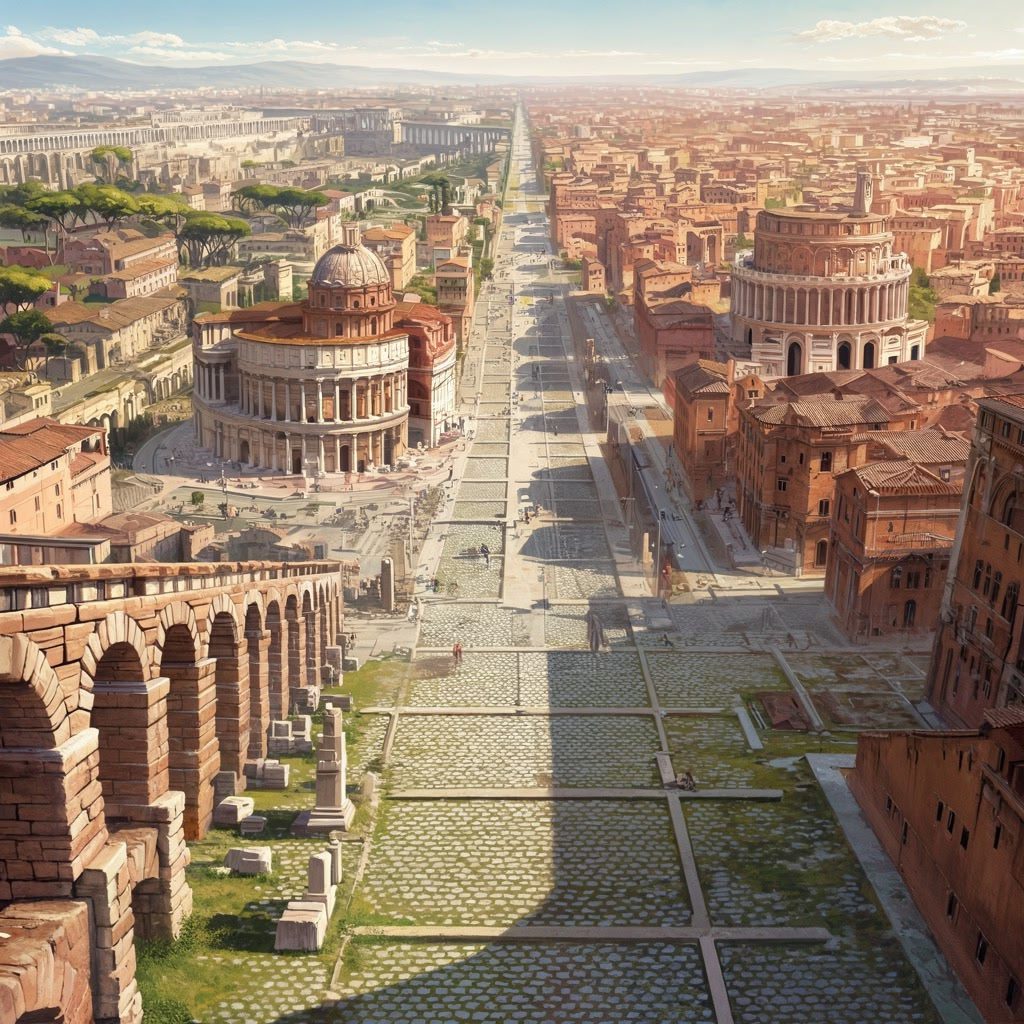
The Lasting Legacy of Roman Urban Planning on Modern Cities
Roman innovations in urban planning laid the foundation for many city design principles still visible in contemporary urban environments. The modern urban planning roots trace back to deliberate, functional layouts and infrastructure concepts pioneered by the Romans, shaping how cities operate today.
Key Roman Principles Influencing Modern Urban Planning
- Grid street patterns: The orderly and efficient grid system simplifies navigation, zoning, and land use management. Cities like New York and Chicago owe their straightforward street layouts to this concept.
- Central public spaces: Like Roman forums, modern cities incorporate plazas, squares, and civic centers as focal points for community engagement, commerce, and governance.
- Integrated water management: Aqueduct-inspired water supply systems evolved into sophisticated municipal water networks ensuring clean water access for growing populations. This aspect is particularly relevant today as we focus on evolving our water management practices to address climate change challenges.
- Robust road networks: Roman emphasis on durable roads supporting military and commercial movement informs today’s highways connecting metropolitan areas.
Examples of Cities Adopting Roman Features
- Barcelona’s Eixample district uses the grid pattern with chamfered corners to optimize traffic flow, echoing Roman street design.
- Paris’ Place de la Concorde functions as a social and political hub akin to ancient forums.
- London’s sewer system, inspired by Roman sanitation mastery, revolutionized urban hygiene in the 19th century.
Urban planners continuously draw on the Romans’ commitment to durability, functionality, and societal needs. These time-tested strategies remain embedded in the DNA of city design worldwide, including in our comprehensive planning efforts which aim to create sustainable and resilient urban environments.
Conclusion
The summary of Roman urban innovations shows us just how much they changed city life forever. Their ideas for city planning, which focused on being practical, long-lasting, and bringing people together, became a model for future generations. The way they designed streets in a grid pattern, built aqueducts for water supply, created sanitation systems for cleanliness, and constructed impressive buildings were not only solutions for their time but also set standards that are still relevant in modern urban design.
Here are some key impacts of Roman urban innovations:
- Enhanced mobility and connectivity
- Improved public health and hygiene
- Elevated civic engagement and communal spaces
- Architectural advancements shaping city aesthetics
Roman urban planning is a shining example of brilliant engineering and community-focused development. The ideas behind it continue to influence how cities expand, prosper, and meet the needs of their residents today.

